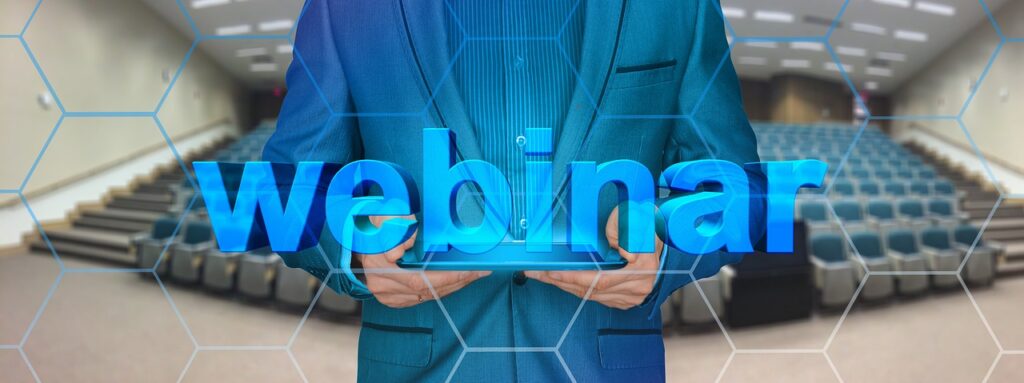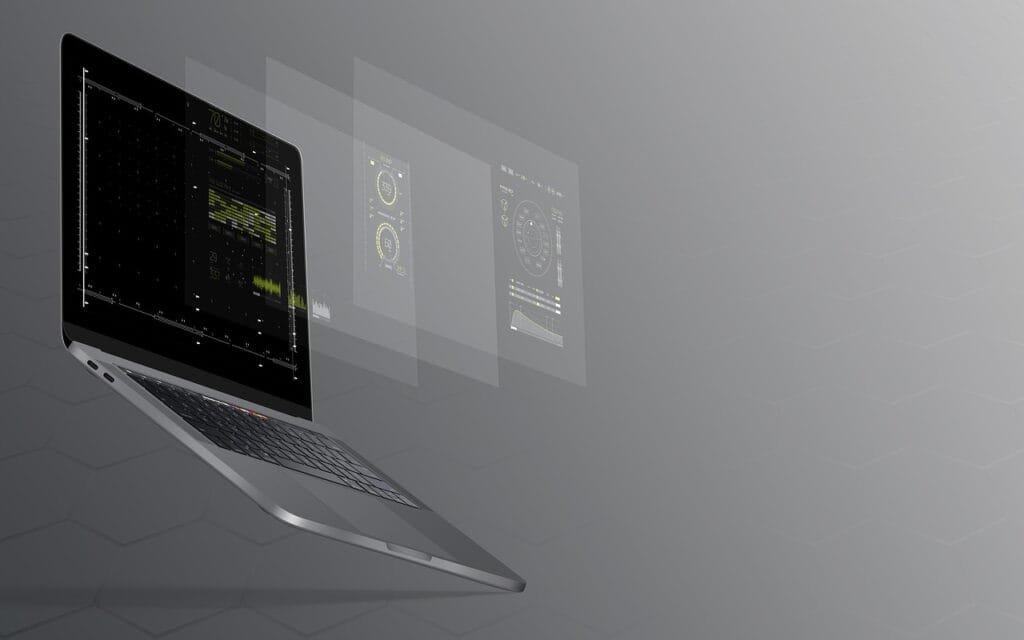In the digital age, webinars have emerged as a pivotal tool for connecting professionals, delivering valuable content, and fostering interactive learning environments. They bridge geographical barriers and create a virtual space where knowledge, insights, and experiences are shared. However, the efficacy of a webinar is not just determined by its content or the technology it employs but also by the continuous enhancement and improvement processes that follow each session. This is where the indispensable role of webinar feedback comes into the limelight.
The Essence of Feedback
Webinar feedback is more than a post-event formality. It’s a goldmine of insights, offering a direct glimpse into the audience’s perceptions, experiences, and expectations. Each feedback form filled, and every comment made is a stepping stone to refining the webinar’s structure, content, and delivery. In this comprehensive guide, we will navigate through the intricate pathways of collecting, analyzing, and implementing webinar feedback to enhance the overall audience experience and elevate the content quality to unparalleled heights.
Seamless Integration of Feedback Mechanisms
The first 500 words have set the stage for a deep dive into the strategies and mechanisms to optimize the collection and utilization of webinar feedback. From the simplicity of questionnaires to the sophistication of AI-powered analytics, every feedback tool is a catalyst for transformation and improvement.
Collecting Insightful Feedback
In the art and science of webinar hosting, feedback isn’t a one-size-fits-all mechanism. The depth, breadth, and granularity of insights required shape the feedback tools and strategies employed. Surveys and questionnaires are traditional yet powerful tools, often customized to glean specific insights. These can be qualitative, quantitative, or a mix of both, each serving a unique purpose in the panorama of webinar enhancement.
Real-time feedback, an often underexplored treasure trove of insights, offers instantaneous reactions and perspectives. Live polls and Q&A sessions are not just interactive elements but rich sources of feedback. They unveil the audience’s pulse, their engagement levels, immediate reactions, and the resonance of the content.
Analyzing Data for Actionable Insights
The transition from data collection to analysis is a journey from raw, unstructured information to meaningful, actionable insights. The amalgamation of various data, including attendees’ demographics, their engagement levels, drop-off points, and feedback responses, is pivotal to drawing comprehensive insights. Tools employing artificial intelligence and machine learning algorithms sift through this data, offering patterns, trends, and focal points for improvement.
Tailoring Content and Delivery
With insights at the helm, the next leap is towards tailoring content and delivery. Every audience is a unique blend of preferences, learning styles, and expectations. Customizing content to resonate with diverse audience segments is not a luxury but a necessity. This extends beyond the content’s thematic elements to its delivery style, the use of visual aids, storytelling, and the integration of interactive elements.
Unraveling Real-World Implications
Embarking on a journey through real-life scenarios, we begin to visualize the tangible impacts of feedback. Case studies from leading corporate entities unveil a tapestry of continual improvements and innovations. Every webinar, adorned with a unique thematic premise, is also embedded with subtle experimental nuances – a different storytelling technique, a novel interactive element, or an unconventional content structure.
The Power of A/B Testing
In the world of digital marketing, A/B testing isn’t confined to emails or landing pages. Webinar content, too, becomes a canvas for this empirical testing. Different content styles, presentation structures, or interactive elements are presented to segmented audience groups. Feedback is meticulously analyzed, driving informed decisions rooted in actual audience responses rather than hypothetical assumptions.
Engaging Through Personalization
Personalization, often echoed as a buzzword, finds profound relevance in webinars. Every piece of feedback, every response to a poll, and every question asked during a Q&A is a gateway to understanding the audience at a granular level. Webinar hosts, armed with these insights, craft experiences that are not just thematic echoings but resonate with individual attendees’ expectations, queries, and interests.
The Feedback-Content Loop
Feedback is not a post-event epilogue but an integral element of the content lifecycle. Insights derived from one event seed the genesis of the next. This iterative process ensures that webinars are not static, monolithic constructs but dynamic entities, evolving and adapting.
Technology and Human Synergy
In the intricate dance of webinar enhancement, technology and human intuition weave together, creating a ballet of insights and refinements. AI and machine learning tools sift through volumes of feedback, categorizing, and analyzing them to unveil patterns, preferences, and pain points. Yet, the human touch, nuanced and intuitive, interprets these data, breathing life and context into numerical and textual feedback.
Artificial Intelligence – The Silent Observer
AI’s role is transformative, silently observing, learning, and adapting. It dissects every response, every click, every moment of engagement and disengagement. A webinar isn’t just a live event but a living entity, each iteration learning from its predecessor. AI ensures that learning is systematic, organized, and actionable. However, it’s the human facilitators who harness these learnings, converting insights into experiential enhancements.
Human Facilitators – The Creative Force
The facilitators are akin to skilled artisans. They view every piece of feedback not just as data but as voices, expressions of attendee experiences, and expectations. Every suggestion, critique, and appreciation is a brushstroke, adding depth and dimension to the webinar canvas. Facilitators translate the structured insights unveiled by AI into creative expressions, thematic refinements, and interactive innovations.
A Symbiotic Dance
This synergy is akin to a dance, where AI leads with structured insights and human facilitators follow, adding creative flair, contextual interpretations, and experiential innovations. It’s a dance that iteratively refines webinars, making every event not just a presentation but a personalized experience, an intimate conversation, and an engaging narrative.
Real-Time Enhancements
But the dance doesn’t wait for the event’s completion. Real-time feedback, facilitated by interactive features, ensures that webinars are dynamic. Facilitators can adapt, pivot, and enhance the experience in real-time, ensuring that attendee feedback isn’t just a post-event reflection but a real-time tool for enhancement.
Unfolding Future Trends
As we step into the future, the essence of feedback will be marked by immediacy and precision, shaped by the ever-evolving digital landscape. The webinar realm is expected to transcend traditional boundaries, ushering in an era where feedback becomes the cornerstone of real-time enhancements and individualized experiences. Let’s explore these transformative waves.
The Advent of Predictive Analytics
Predictive analytics will no longer be an external mechanism but an integrated aspect of webinars. AI will predict patterns of engagement, allowing facilitators to adjust the content and interaction in real time. Every pause, question, and interaction will be data points painting a comprehensive picture of attendee sentiment and engagement.
Virtual Reality (VR) and Augmented Reality (AR)
VR and AR will revolutionize feedback collection and analysis. Attendees will step into immersive environments, where their interactions, movements, and engagements will be real-time feedback. Facilitators can witness and analyze attendee engagement in three dimensions, adding a depth of understanding that transcends textual and numerical feedback.
Hyper-Personalization
AI will not just collect and analyze feedback but will be instrumental in creating hyper-personalized webinar experiences. Learning from each interaction, AI will customize content, interaction, and engagement for individual attendees, ensuring that every webinar is a unique experience tailored to the attendee’s preferences, expectations, and learning style.
Blockchain in Feedback Authenticity
Blockchain will ensure the authenticity and security of feedback. Every piece of feedback will be recorded in immutable ledgers, ensuring transparency and authenticity. This will mitigate the challenges of feedback manipulation and authenticity, ensuring that insights derived are genuine and actionable.
Integrative Feedback Ecosystems
The future will witness the integration of feedback ecosystems. Feedback from webinars will not be standalone but will be part of a comprehensive ecosystem that includes social media, digital platforms, and offline interactions. AI will integrate these diverse feedback forms into comprehensive insights, ensuring a 360-degree view of attendee engagement and expectations.

Related: Check out our free SEO suite

The Intersection of IoT and Webinar Feedback Mechanisms
The intersection between the Internet of Things (IoT) and webinar feedback is another intriguing frontier. With billions of devices interconnected, feedback becomes a seamless, automated, and instantaneous process. Let’s explore this intricate interplay further.
Real-Time Engagement Metrics with IoT
IoT’s integration into webinars will permit facilitators to gather real-time engagement metrics. Devices worn or used by attendees, like smartwatches and tablets, will provide insights into the user’s behavior, reactions, and engagement levels. These metrics will offer invaluable live data to enhance content delivery and interaction.
Enhanced Interactivity
Imagine a scenario where a participant’s smart device vibrates to prompt feedback at specific junctures during the webinar. This instantaneous feedback will give hosts insights into participants’ reactions at exact moments, thus enhancing the qualitative depth of the feedback.
AI and Machine Learning Synergy
When IoT synergizes with AI and machine learning, the feedback mechanism becomes intelligent. It not only gathers but also learns and adapts. It discerns patterns, predicting and preempting attendee expectations and reactions. The feedback, thus, is not just real-time but also predictive, providing insights ahead of time.
Data Security and Privacy
As IoT elevates the richness of feedback, issues of data security and privacy will gain prominence. Advanced encryption and privacy protocols will ensure that the personal and sensitive data gathered is protected. This safeguards the integrity of the feedback while respecting attendee privacy.
Feedback in the Virtual and Physical World
The integration of IoT will bridge the gap between the virtual and physical worlds. Feedback will not be restricted to digital interactions but will encapsulate physical reactions. The subtleties of a participant’s environment, mood, and physical reactions, captured by IoT devices, will enrich the feedback, adding layers of insights previously inaccessible.
Concluding Thoughts:
In the panoramic landscape of webinar engagement, feedback mechanisms are metamorphosing from static, post-event evaluations to dynamic, real-time, and predictive engagements. As we step into this transformative era, every touchpoint, expression, and interaction is woven into a rich tapestry of insights. These insights, garnered meticulously, are not only enhancing the attendee experience but also driving presenters towards perfection, one session at a time.
The infusion of AI, IoT, and machine learning is not an incidental occurrence but a necessary evolution. In a world where data is king, the quality, depth, and immediacy of feedback are the crown jewels. They illuminate the path for facilitators, marketers, and educators, offering a roadmap crafted not by assumption but by real, tangible, and actionable insights.
READ NEXT:
- The Challenges of Multi-Country SEO in Financial Services
- Social Media Meta Tags for Healthcare SEO
- Can You Protect Your Software by Patent or Copyright in India? Find Out
- How to Utilize Interactive Features for Enhanced Engagement
- The Role of Audience Segmentation in Webinar Success





















Comments are closed.